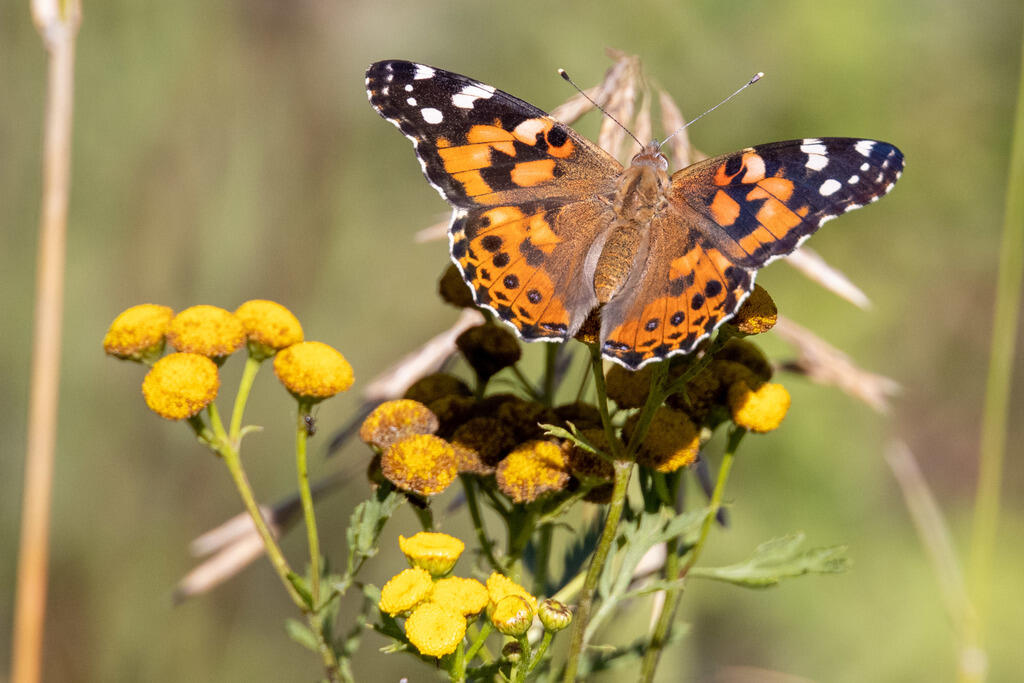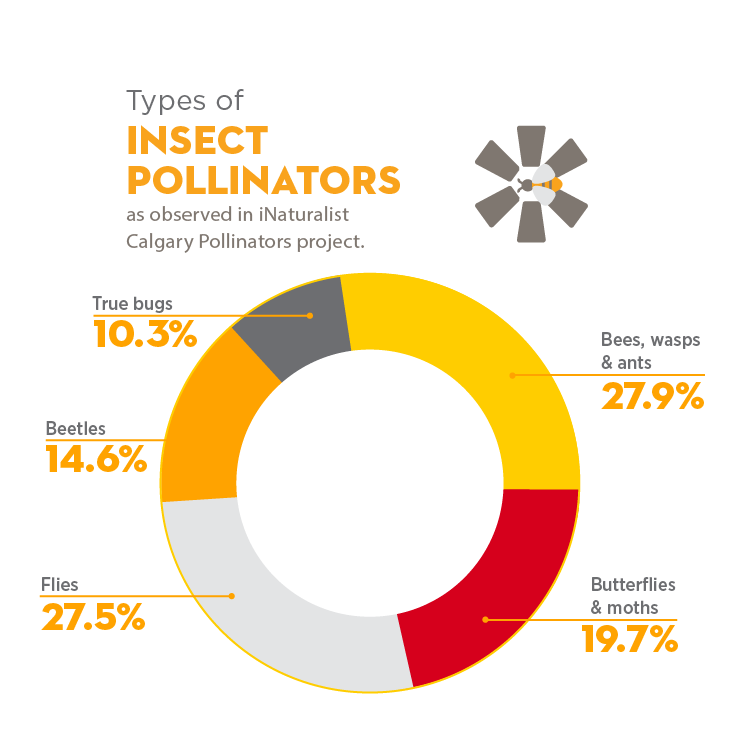
Bee a Community Scientist
What are pollinators and why are they important?
Pollinators are animals that interact with flowers and transfer pollen from one flower to another. They are essential members of our communities. Some examples include birds, bees, butterflies and flies.
- 75-95% flowering plants need pollinators to produce seeds.
- By pollinating crops, more than $200 billion is added to our global economy.
Native pollinators are in decline due to a variety of factors, therefore a better understanding of how to support them is important as many of our native flowering plants and food are dependent on pollinators. We can support pollinators by planting the best plants throughout our urban environments such as, creating pollinator corridors in our backyards, balconies, community gardens, in parks, and along roadways.

Painted Lady butterfly
Andrew Hart (agh12398) CC-BY-NC
About
iNaturalist is a community of people from all over the world who upload photographs of living things and help each other identify them. Add your photos of pollinating insects to the Calgary Pollinator Project to help us understand the diversity of pollinators in Calgary and the types of plants that we can grow to support our wild pollinators.
Ready to participate?
Begin by reviewing the Photographing Pollinators Guide.

More ways to observe pollinators
Try a Timed Pollinator Count to see the types of pollinators that visit one type of flower in 5 or 10 minutes intervals.
How to do a Timed Pollinator Count

UCalgary biodiversity research
Read more about our ongoing work on studying pollinators and their biodiversity.
Photo credits: Karrin CC-BY-NC



























